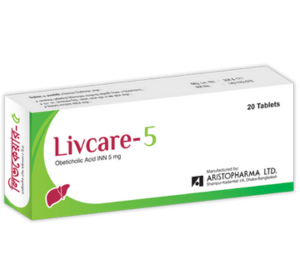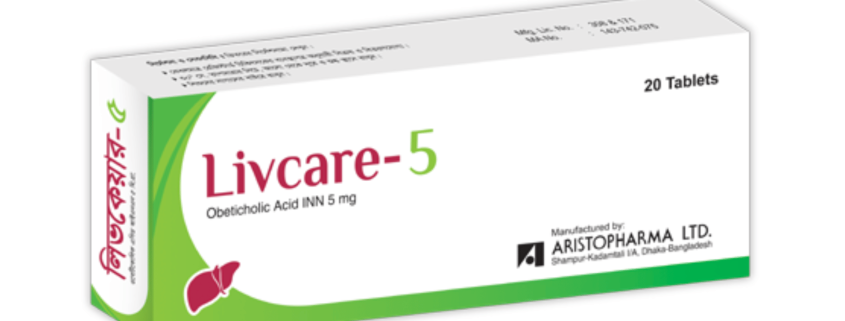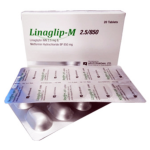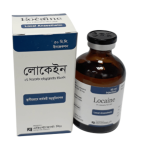Livcare (Obeticholic acid )

Therapeutic Group : Farnesoid X receptor agonists
Presentation:
Livcare-5 Tablet: Each film coated tablet contains Obeticholic Acid INN 5 mg.
Livcare-10 Tablet: Each film coated tablet contains Obeticholic Acid INN 10 mg.
Pharmacology:
Obeticholic Acid is a Farnesoid X Receptor (FXR) agonist, a nuclear receptor expressed in the liver and intestine. FXR is a key regulator of bile acid, inflammatory, fibrotic, and metabolic pathways. FXR activation decreases the intracellular hepatocyte concentrations of bile acids by suppressing de novo synthesis from cholesterol as well as by increased transport of bile acids out of the hepatocytes. These mechanisms limit the overall size of the circulating bile acid pool while promoting choleretic, thus reducing hepatic exposure to bile acids.
Indications:
Livcare is indicated for the treatment of Primary Biliary Cholangitis (PBC) in combination with Ursodeoxycholic Acid (UDCA) in adults with an inadequate response to UDCA, or as monotherapy in adults unable to tolerate UDCA, cholestatic liver disease & Non-alcoholic Fatty Liver Disease (NAFLD) including Non-alcoholic Steatohepatitis (NASH).
Dosage & Administration:
Starting Dosage for first 3 months: The recommended starting dose of Livcare is 5 mg once daily with or without food for adult patients who have not achieved an adequate biochemical response to an appropriate dosage of UDCA for at least 1 year or are intolerant to UDCA. Dosage titration after first 3 months: Patients who have not achieved an adequate reduction in Alkaline Phosphatase (ALP) and/or total bilirubin after 3 months of Obeticholic Acid 5 mg once daily and who are tolerating Obeticholic Acid, the dose of Obeticholic Acid is increased to 10 mg once daily with or without food.
Maximum Dosage: The maximum recommended dosage of Obeticholic Acid is 10 mg once daily with or without
food.
Contrainidications:
Starting Dosage for first 3 months: The recommended starting dose of Livcare is 5 mg once daily with or without food for adult patients who have not achieved an adequate biochemical response to an appropriate dosage of UDCA for at least 1 year or are intolerant to UDCA. Dosage titration after first 3 months: Patients who have not achieved an adequate reduction in Alkaline Phosphatase (ALP) and/or total bilirubin after 3 months of Obeticholic Acid 5 mg once daily and who are tolerating Obeticholic Acid, the dose of Obeticholic Acid is increased to 10 mg once daily with or without food.
Maximum Dosage: The maximum recommended dosage of Obeticholic Acid is 10 mg once daily with or without food.
Warning & Precautions:
The following cases warning & precautions are needed and special monitoring is essential for the patients.
- Hepatic decompensation and failure in incorrectly dosed Primary Biliary Cholangitis (PBC) patients with moderate (Child-Pugh Class B) or Severe (Child-Pugh Class C) hepatic impairment or decompensated cirrhosis
- Liver-related adverse reactions
- Severe pruritus
- Reduction in HDL-C
Side effects:
The most common side effects are pruritus, fatigue, abdominal pain & discomfort. Other common side effects are rash, arthralgia, oropharyngeal pain, dizziness, constipation, peripheral edema, palpitations, pyrexia, thyroid function abnormality and eczema.
Drug interaction:
Bile Acid Binding Resins: Bile acid binding resins such as cholestyramine, colestipol may reduce the absorption and efficacy of Obeticholic Acid. If taking a bile acid binding resin, take Obeticholic Acid at least 4 hours before or 4 hours after taking the bile acid binding resin, or at as great an interval as possible. Warfarin: Potential for decreased INR; monitor INR and adjust the dosage of warfarin, as needed, to maintain the target INR range. CYP1A2 Substrates with Narrow Therapeutic Index (e.g., Theophylline and Tizanidine): Potential for increased exposure to CYP1A2 substrates; monitor drug concentrations of CYP1A2 substrates with narrow therapeutic index. Inhibitors of Bile Salt Efflux Pump (e.g., cyclosporine): Avoid use. If concomitant use is necessary, monitor serum transaminases and bilirubin. With food: Obeticholic Acid can be given with or without food.
Use in special groups:
Use in Pregnancy & Lactation: The limited available human data on the use of Obeticholic Acid during pregnancy are not sufficient to inform a drug-associated risk. There is no information on the presence of Obeticholic Acid in human milk, the effects on the breast-fed infant or the effects on milk production.
Use in Children & Geriatric: The safety and effectiveness of Obeticholic Acid in pediatric patients have not been established. No dosage adjustment is required in elderly patients less than 65 years of age.
Renal impairment: Obeticholic Acid has not been studied in patients with moderate and severe renal impairment (estimated glomerular filtration rate [eGFR] less than 60 mL/min/1.73 m2).
Hepatic impairment: Obeticholic Acid is metabolized in the liver. The recommended starting dosage of Livcare is 5 mg once weekly for patients with moderate (Child-Pugh Class B) or Severe (Child-Pugh Class C) hepatic impairment or a prior decompensation event. If an adequate reduction in ALP and/or total bilirubin has not been achieved after 3 months of Obeticholic Acid 5 mg once weekly and the patients are tolerating the drug, increase the dosage of Obeticholic Acid to 5 mg twice weekly (at least three days apart) and subsequently to 10 mg twice weekly (at least three days apart) depending on response and tolerability.
Storage:
Store below 30°C temperature & dry place, protected from light
Keep out of the reach of children
Packing:
Livcare-5 Tablet: Each box contains 20 Tablets in alu-alu blister pack.
Livcare-10 Tablet: Each box contains 10 Tablets in alu-alu blister pack.



